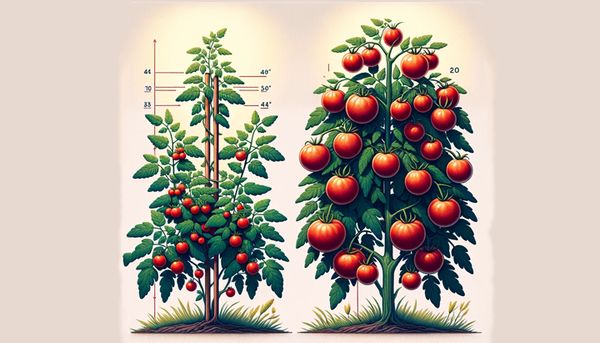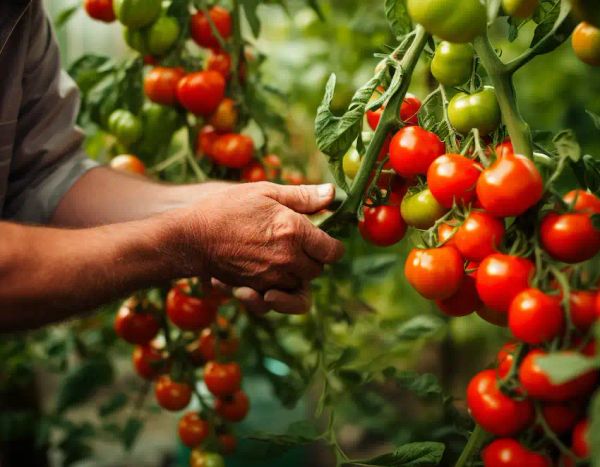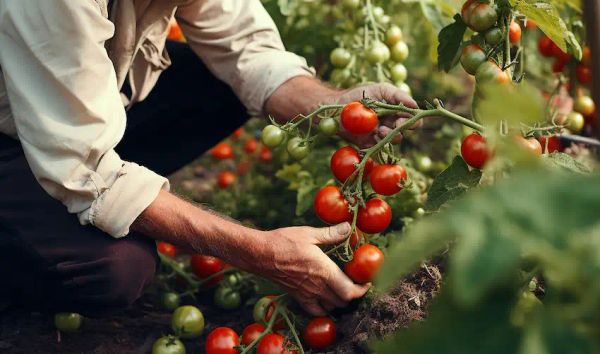Tomatoes are one of the most popular plants to grow, and with good reason. But to have a truly bountiful harvest, there’s more to it than just planting and watering. Proper pruning is essential for the health and productivity of your tomato plants.

This comprehensive guide will walk you through the reasons behind pruning, the best timing, and the techniques to help you become a master at pruning tomatoes. With detailed steps and insightful tips, you’ll be well-equipped to achieve an impressive harvest.
Understanding the Importance of Pruning Tomatoes
Pruning, which involves selectively removing plant parts, is crucial for tomatoes for several reasons:

- Improves Air Circulation: Pruning opens up the plant’s structure, allowing air to flow freely through the leaves and reducing the risk of fungal diseases.
- Enhances Sunlight Exposure: By removing excess leaves, you ensure that sunlight reaches the fruits and lower parts of the plant, promoting healthy growth and ripening.
- Directs Energy to Fruit Production: By eliminating unnecessary shoots and leaves, the plant can focus its energy on producing larger, healthier fruits.
Preparing to Prune
Before you begin pruning, it’s important to have the right tools. A pair of clean, sharp pruning shears or scissors is essential. It’s also a good idea to disinfect your tools before and after pruning to prevent the spread of disease.
Step 1: Identify the Type of Tomato Plant
Different tomato plants have different pruning needs. Understanding the type of plant you have will guide your pruning approach:
- Determinate Tomatoes: These plants grow to a specific height, produce fruits all at once, and then decline. Pruning is minimal for determinate tomatoes; focus on removing any suckers below the first flower cluster.
- Indeterminate Tomatoes: These plants continue to grow and produce fruit throughout the season. They require regular pruning to manage their size and direct their energy.

Step 2: Pruning Basics
Mastering the basics of pruning is essential for a successful harvest:
- Remove Suckers: Suckers are small shoots that grow in the axils (the angle between the stem and a leaf). For indeterminate varieties, remove suckers below the first fruit cluster to encourage fruiting branches. Leave a few suckers on determinate plants to provide shade for the fruits.
- Prune Lower Leaves: Remove leaves close to the ground to prevent soil-borne diseases from splashing onto the foliage. This is especially important after the plant has set fruit.
- Thin Out Leaves: Thin out some of the leaves in the middle of the plant to improve air circulation and sunlight penetration.
Step 3: Advanced Pruning Techniques
Once you’ve mastered the basics, you can explore more advanced pruning techniques to further enhance your tomato plants:
- Topping Off: About a month before the first expected frost, you can “top off” indeterminate plants by cutting off the top growing point. This redirects the plant’s energy into ripening existing fruit rather than producing new growth.
- Missouri Pruning: Instead of removing entire suckers, you can pinch off just the tips, leaving one or two leaves. This method, known as Missouri pruning, allows the plant to retain some of its leafy growth without becoming too bushy.
Step 4: Regular Maintenance
To ensure healthy and productive tomato plants, regular maintenance is key:
- Monitor Your Plants: Regularly check your tomato plants for any signs of overgrowth or disease and prune as needed. The best time to prune is in the morning when the plants are dry to reduce the spread of diseases.
- Support Your Plants: As your tomato plants grow larger and start bearing fruit, provide adequate support. Stakes, cages, or trellises can ensure your plants stay upright and healthy.
Step 5: Post-Pruning Care
After pruning, it’s important to take proper care of your tomato plants:
- Watering: Ensure your tomatoes receive enough water, but avoid wetting the leaves. Watering at the base of the plant helps prevent fungal diseases.
- Fertilizing: Feed your plants with a balanced fertilizer to support their growth, especially after significant pruning.
Pruning tomatoes may seem daunting at first, but with practice, it becomes a straightforward and gratifying part of growing tomatoes. By following these detailed steps and understanding the needs of your tomato plants, you can ensure a healthy and productive garden filled with delicious, sun-ripened tomatoes. Happy gardening!




